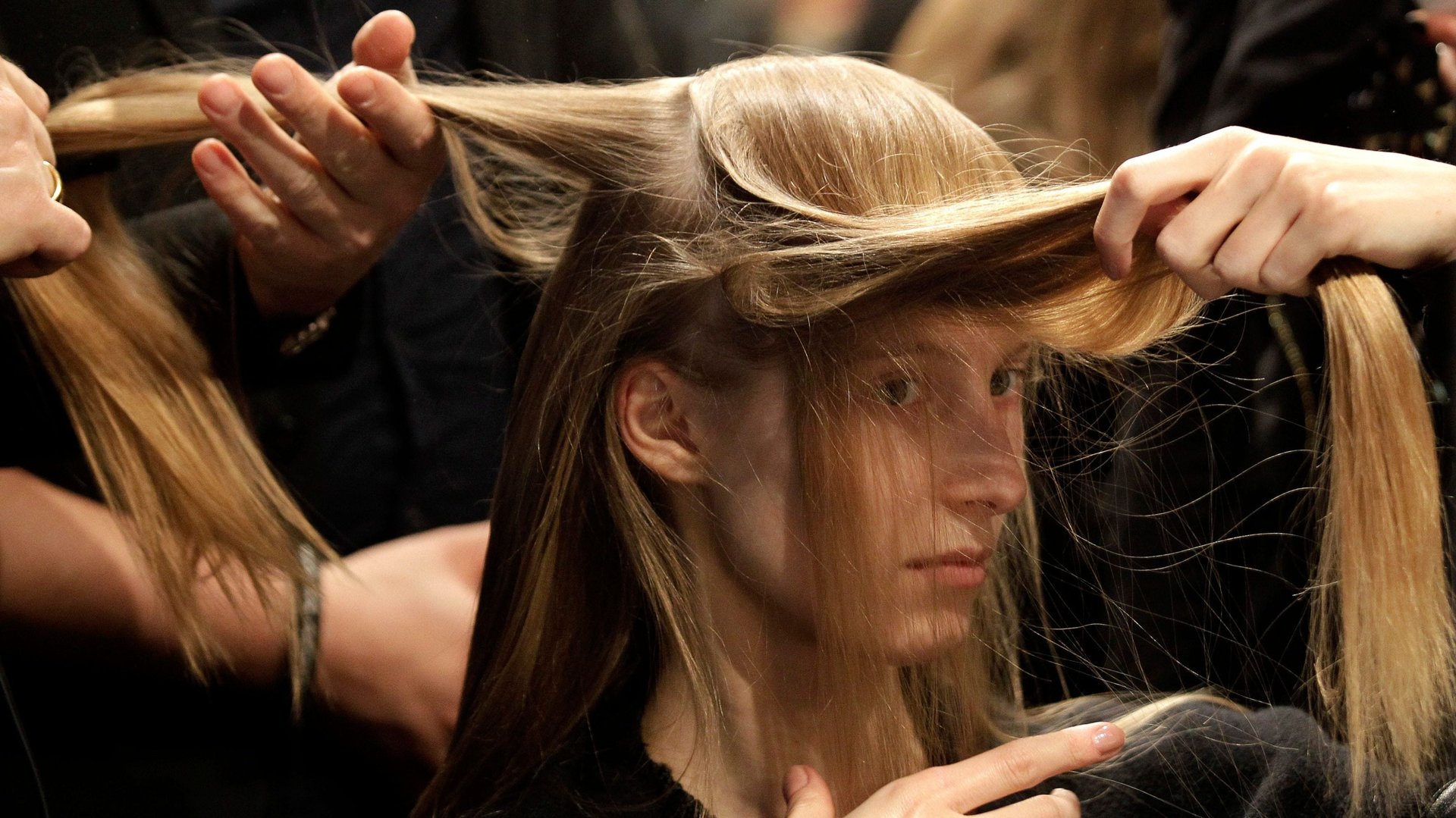Dyson is proving tech companies can profit by marketing to women
I, like most women I know, want my hair to look good.


I, like most women I know, want my hair to look good.
For me, that usually just means aiming for no frizz, because the prospect of using tools to create beachy waves or some other deceptively effortless-looking style is too time-consuming. That, combined with the risk of heat damage, means I rarely style my hair beyond a cursory blow-dry. But the new Dyson Airwrap is throwing all my coiffing concerns into question.
The product—an all-in-one dryer, curler, volumizer, and smoother—is expensive, with the price ranging from $500 to $550. That turns off swathes of consumers who want the product but simply can’t afford it, and Dyson’s option for monthly payments have some tweeting that it’s just not worth the effort.
Dyson’s Supersonic Hairdryer, launched in 2016, was highly priced at $400 but received high praise. The company’s first foray into hair care, it became the best-selling hairdryer in the UK after its launch, and Dyson enjoyed a 45% sales boost that same year. Today the Supersonic remains a top seller at Sephora, the New York Times reports (paywall). Full disclosure: I own a Supersonic that I bought last December, and its prowess as a hairdryer alone—it also works as a straightener, with an attachment—still merits the hype.
The tech in the Dyson Airwrap seems more impressive. The range of hair tool options in one product and the intelligent heat control is covetable, but the star feature, the “Coanda effect,” is eyebrow-raising. Essentially, by combining a powerful motor with aerodynamics, the curling iron creates a cyclone of air that attracts hair, sucks it around the barrel, and creates curls while also drying your hair—little effort needed.
The combined effect of all these features gets to the heart of why the Airwrap has so much buzz. Dyson has spent six years and $31.4 million in development costs— and worked through 642 prototype iterations—to create a product that makes the lives of women (and everyone else who makes hairstyling reservations) easier. Convenience, efficiency, and looking good are worth investing in, and, as US congressional candidate and software engineer Brianna Wu points out, have more value to women than any smartphone upgrade.
Wu also pointed out that tech companies could profit from investing in products that specifically (or also) cater to the needs of women. (An iPhone that is practical for the smaller hands of women is one example.)
But Erica Joy, senior engineering manager at Patreon, points out that Dyson is still leaving money on the table because it’s not yet clear if the Airwrap caters to all hair types, particularly that of black women.
While Dyson has posted videos of the Airwrap being used on a range of ethnicities, Gizmodo reports that Dyson declined to style a black model who had 4B type hair, meaning thick hair with kinky curls, during a trial. Dyson explained that this was because such hair required more tools and products in order for the Airwrap to work effectively.
Still, even though Dyson might have further to go before its products are inclusive for all hair types, the company is going to great lengths to create innovative products for women. Future sales will determine if the Airwrap will be as popular as the Supersonic, but it’s already making waves.